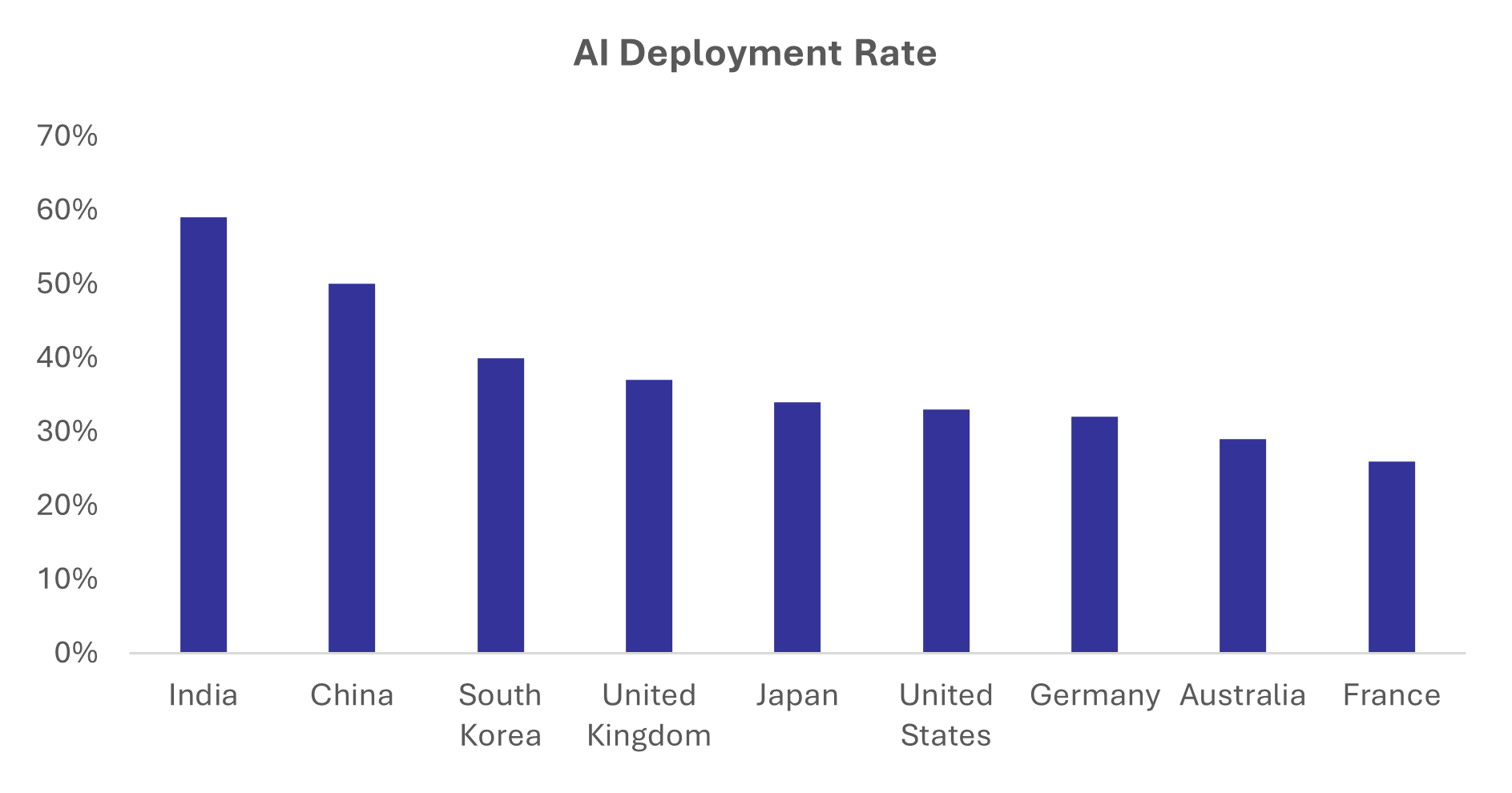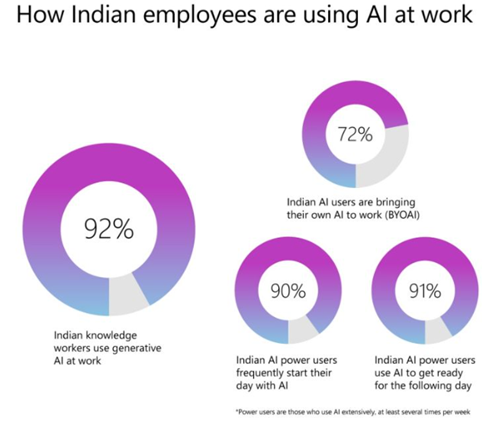AI revolution being led by India

The global AI market is projected to grow at an impressive annual rate of 37% from 2024 to 2030, signalling a major transformation across economies worldwide. India’s rapid AI adoption positions it uniquely within this trend, making it a country to watch closely for investors seeking exposure to AI-driven growth.
India’s swift deployment of AI is driven by several distinct factors, including AI optimism in the workforce, strategic government initiatives and private sector investments. These elements create a high-growth AI environment that would be difficult to replicate elsewhere, suggesting India may capture substantial economic and corporate gains from the AI boom.
AI in the workforce
India’s rapid AI adoption is notable, with 92% of Indian knowledge workers already using generative AI—significantly higher than the global average of 75%.

India’s workforce is very optimistic about AI. According to Puneet Chandok, President of Microsoft India, this high adoption rate reflects India’s readiness to integrate AI at scale. Microsoft and other tech leaders are supporting training initiatives to prepare 2 million people with AI skills by 2025, further strengthening India’s AI capabilities. This proactive approach highlights India’s unique advantage in a world increasingly reliant on AI talent and technology integration.
Government-Led “Bottom-Up” Approach
India’s government has been instrumental in fostering AI, deploying a “bottom-up” approach by building digital public infrastructure (DPI). Combining technology with public services, DPI has created broad access for over 900 million internet users, improving governance and payment systems, and providing a robust foundation for AI development.
India’s AI strategy is ambitious; in March 2024, it allocated $1.25 billion toward the India AI Mission to support start-ups and computing infrastructure, further boosting its competitive edge in the global AI race. Additionally, the government is developing targeted language models for public services, demonstrating India’s commitment to creating AI solutions that cater to its diverse population and that could serve as blueprints for similar challenges globally.
India’s Growing AI Infrastructure and Private Sector Investments
The spotlight on India comes at a time when many countries around the globe are keen to foster their own competing AI systems rather than turning to the U.S. or China. In the last few years, the Indian government has nurtured an ecosystem where global players like Google and Meta, Indian businesses like Reliance Jio and Tata Consulting Services, and homegrown start-ups can take advantage of its cost-efficient technological landscape.
The demand for computing infrastructure has also led the Indian government to procure 1,000 GPUs to power AI innovations. With support from global chipmakers like Nvidia, which recently partnered with Indian cloud services company Yotta, India is rapidly expanding its AI infrastructure.
Private sector giants are also racing to develop AI projects. Tata Consultancy Services (TCS) and Adani Group have announced major investments in generative AI, further cementing India’s AI ambitions. Reliance’s collaboration with Indian academia to launch "Bharat GPT," a Chat GPT-style service tailored for India’s linguistic diversity, shows how Indian companies are embracing AI to drive productivity and innovation across sectors.
What Does this Mean for Investors?
As mentioned earlier, these unique factors place India in a strong position to benefit from the AI boom. The adoption of AI in India is being used in almost every industry in the country, potentially contributing to a massive economic boost.
According to EY, Gen AI’s contribution would translate to US$1.2 trillion to US$1.5 trillion cumulated GDP by 2030, representing an additional CAGR of 0.9% to 1.1% to its GDP growth. This is on top of an already impressive growth trend for the Indian economy, accelerating its potential as a stand-alone investment region for investors, deserving a place in every growth investors portfolio.
5 topics

